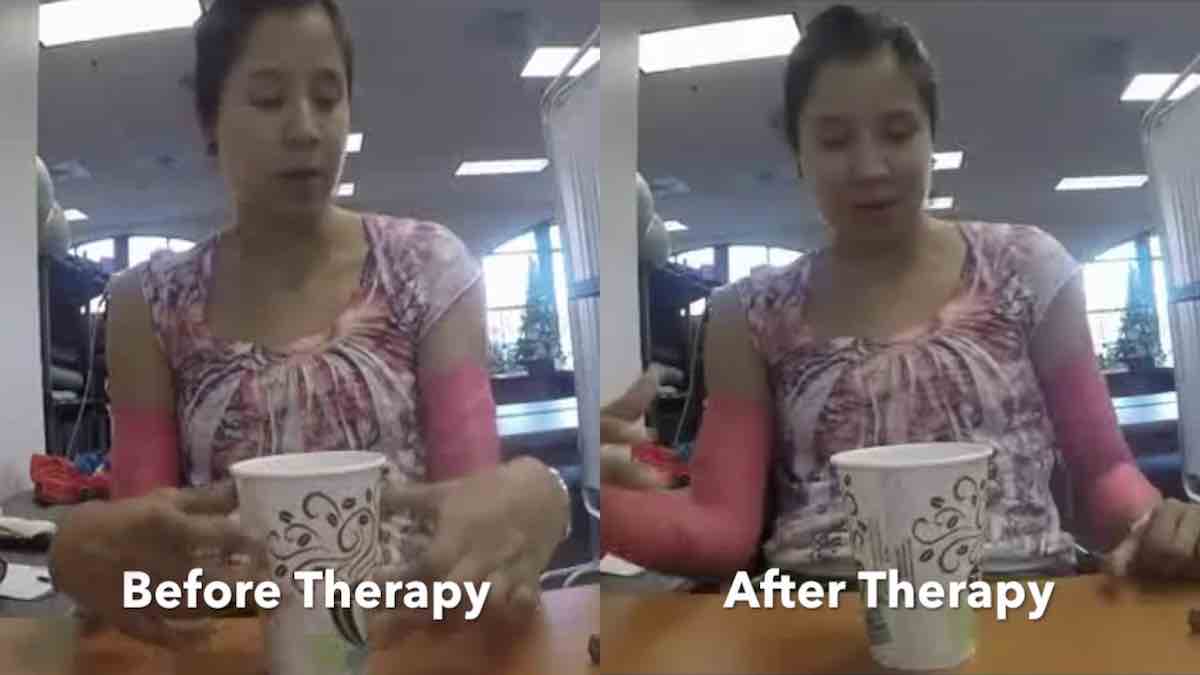6 people with severe spinal injuries have regained motor function in their hands and fingers for the first time in years thanks to an inexpensive, noninvasive, nonsurgical spinal treatment.
At the beginning of the UCLA-led study, 3 of the patients were unable to move their hands at all, and none of the participants could perform simple tasks such as opening a water bottle, turning a doorknob, or operating a cell phone. Some of the patients had been paralyzed for over 10 years – others had been without motor function for as little as one year.
Over the course of eight therapy sessions in four weeks, researchers attached electrodes to the patients’ skin that applied electrical currents at varying frequencies and intensities to stimulate the spine’s circuitry. The researchers called the treatment “transcutaneous enabling motor control,” or tEmc.
After just four sessions, patients started seeing positive results.
RELATED: Alzheimer’s Gene is Neutralized in Human Brain Cells for the First Time
“About midway through the sessions, I could open my bedroom door with my left hand for the first time since my injury and could open new water bottles, when previously someone else had to do this for me,” said Cecilia Villarruel, one of the participants, whose injury resulted from a car accident 13 years earlier.
“Most people with a spinal cord injury say they just want to go to the bathroom like a normal person again,” she Villarruel. “Small accomplishments like opening jars, bottles and doors enable a level of independence and self-reliance that is quite satisfying, and have a profound effect on people’s lives.”
60 days after undergoing the treatment, two of the patients returned to the laboratory and displayed their maintained grip strength, from opening doorknobs to managing cell phones. The treatment had also improved their bladder function, blood pressure, and cardiovascular function. Not only that, but they were able to dress and feed themselves without the help of a caregiver.
MORE: Drug With 93% Success Rate for Pediatric Cancers Gets FDA Breakthrough Status
The research team has conducted the treatment on two dozen other patients outside of the study participants and all of them showed improved motor function after the therapy.
“Improved hand function can mean the difference between needing around-the-clock care and living more independently,” said Peter Wilderotter, president and CEO of the Reeve Foundation. “These findings bring great hope to those who were told recovery following paralysis would be impossible. As new discoveries and breakthroughs are uncovered, it is clear the word ‘impossible’ no longer applies to spinal cord injury.”
The research team is currently seeking FDA approval for the inexpensive therapy so that the equipment can be given to rehabilitation clinics in poor communities that cannot afford advanced medical treatments.
CHECK OUT: Lung Cancer Patient Given a Year to Live is in Remission Thanks to Cuban Vaccine
“I get criticized a lot for giving ‘false hope’ but we follow where the science tells us to go and just give the research results,” Edgerton said. “Everything is telling us the nervous system is much more adaptable than we’ve given it credit for, and can relearn and recover from severe injury.”
“Nearly everyone thought the only people who would benefit from treatment were those who had been injured for less than a year; that was the dogma. Now we know the dogma is dead,” said V. Reggie Edgerton, senior author of the research. “All of our subjects have been paralyzed for more than a year. We know that in a high percentage of subjects who are severely injured, we can improve their quality of life.”
(WATCH the video below)
Click To Share The Exciting News With Your Friends




















